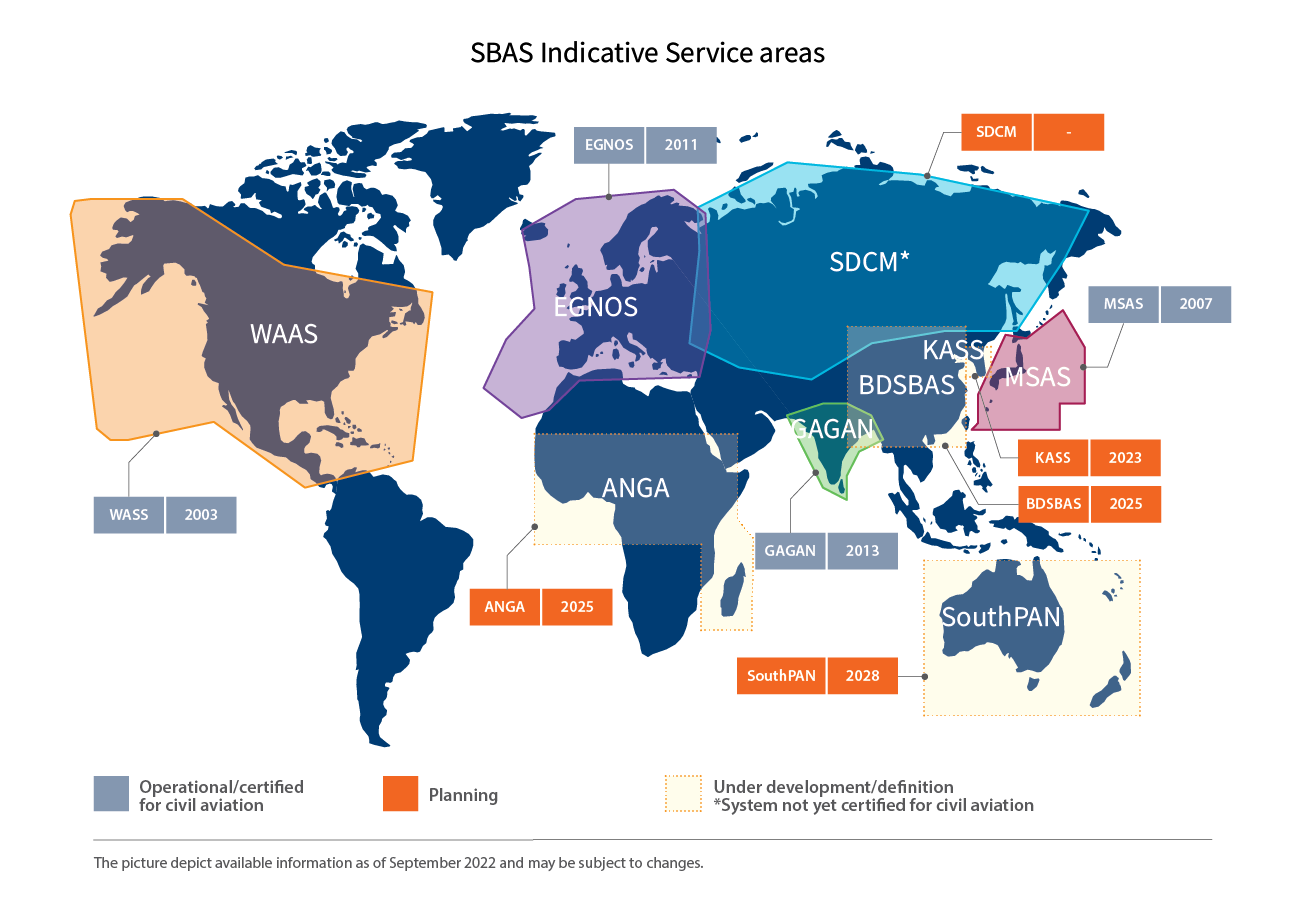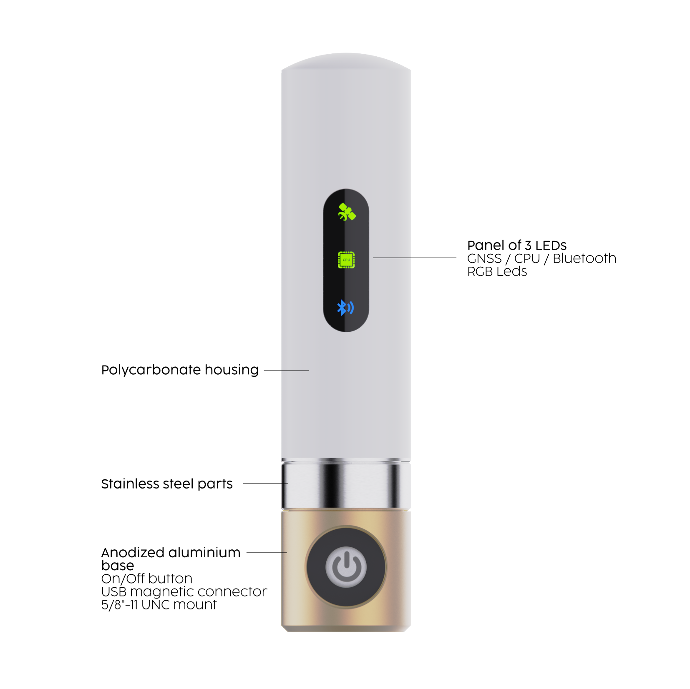GEOSTIX
Récepteur GNSS haut de gamme
Haute précision
Une géolocalisation ultra précise, pouvant aller jusqu'à quelques millimètres.
Modularité
Connectez des étages supplémentaires : 4G, RF 868 MHz, panneau solaire ou encore vos propres capteurs.
Facteur de forme commun
Passez sans effort d'un récepteur mono-fréquence à un tri-fréquence.
Ultra basse consommation
Jusqu'à 20 heures d'autonomie.

GEOSTIX-M8
MONO
FRÉQUENCE

APPLICATIONS RECOMMANDÉES
Performances en mode RTK
Précision horizontale :
2,5 cm + 1 PPM
Précision verticale :
5 cm + 1 PPM
BAS COÛT
ULTRA BASSE CONSOMMATION

GEOSTIX-F9
BI
FRÉQUENCE

APPLICATIONS RECOMMANDÉES


Performances en mode RTK
Précision horizontale :
1 cm + 1 PPM
Précision verticale :
2 cm + 1 PPM
CORRECTIONS L-BAND
BASSE CONSOMMATION

GEOSTIX-X5
TRI+
FRÉQUENCE

APPLICATIONS RECOMMANDÉES


Performances en mode RTK
Précision horizontale :
0,6 cm + 0,5 PPM
Précision verticale :
1 cm + 1 PPM
CORRECTIONS L-BAND
HIGH-END & HIGHEST RELIABILITY
GNSS RECEIVER
Quel GEOSTIX pour quel usage ?
L'illustration ci-dessous indiquent les différentes classes de précision (colonne de gauche), tandis que les différents types d'applications possibles sont listés en haut : post-traitement, sans connexion internet (zones blanches), réseau de surveillance local ou RTK ou encore avec une connexion internet via 4G. Les cases M8, F9, K8 et X5 correspondent respectivement aux GEOSTIX-M8, GEOSTIX-F9, GEOSTIX-K8 et GEOSTIX-X5.

Choisir le type de correction approprié
Sans aucune correction, la technologie GNSS permet d'atteindre une précision de l'ordre de 5 m dans les meilleures conditions.
Heureusement, il existe de nombreux mécanismes permettant d'obtenir des corrections et d'améliorer considérablement la précision des mesures de position.
Sauf dans le cas du post-traitement, où les données du récepteur GNSS et les corrections convergent sur la même machine de traitement, les corrections doivent parvenir au récepteur GNSS.
Ces corrections peuvent être transmises via Ethernet, 3G/4G/5G ou directement depuis un ou plusieurs satellites.
Corrections are transmitted from one or more known fixed stations to the GNSS receiver operating in rover mode.
It is a differential calculation on the code and not on the phase (RTK), which is why the accuracy does not go below 60 cm.
Corrections are computed from a network of stations observations and then are uploaded to a geostationary satellite.
This satellite, which is dedicated to a specific geographical area, broadcasts corrections via L1 frequency
and is tracked using a channel on the receiver.
Here is a list of the different SBASs in different nations :
- USA: Wide Area Augmentation System (WAAS)
- Europe : European Geostationary Navigation Overlay Service (EGNOS)
- Japan: Michibiki Satellite Augmentation System (MSAS)
- India: GPS-aided GEO-Augmented Navigation (GAGAN)
- China: BeiDou SBAS (BDSBAS) (in development)
- South Korea: Korea Augmentation Satellite System (KASS) (in development)
- Russia: System for Differential Corrections and Monitoring (SDCM) (in development)
- ASECNA: Augmented NaviGation for Africa (ANGA) (in development)
- Australia and New Zealand: Southern Positioning Augmentation Network (SouthPAN) (in development)

Source: https://www.euspa.europa.eu/european-space/eu-space-programme/what-sbas
Among the many error sources listed in the table below, there are errors originating from the satellites themselves like orbit errors, clock errors and other biases (satellite antenna geometry and phase center).
Thanks to a worldwide network of sparse reference stations that measure orbit or clock imperfections, corrections can be calculated to compensate for these satellite errors.
In PPP operation, GNSS signals are therefore corrected for satellite errors, but other errors remain: atmospheric, multipath and receiver imperfections.
In the case of PPP, there is a fairly high convergence time of around 15-30 minutes to achieve a few centimeters of accuracy. This is the time needed to resolve atmospheric effects in particular, as the delays are different for each of the GNSS frequencies captured by multi-frequency receivers such as GEOSTIX-K8 or GEOSTIX-X5.
In case of PPP, the station is not referenced to a local base station so the measured positions are in a terrestrial reference frame (ITRF).
To obtain the position in any reference frame different from ITRF, user equipment needs to apply the appropriate valid transformation parameters between the latest ITRF and the desired reference frame.
In the case of RTK, a base station transmits corrections to a mobile GNSS receiver within a radius of less than 50 km from the base station.
Accuracy is of the order of 1 cm + 1 PPM.
1 PPM (1 part per million) means 1 cm per million centimeters (distance between the mobile and the base) or 1 cm every 10 km.
Thus, the 1 cm + 1 PPM precision expected for a mobile 10 km away from the base is 2 cm, and 6 cm if the mobile is 50 km away from the base.
Convergence time in RTK mode is of the order of a few seconds.






